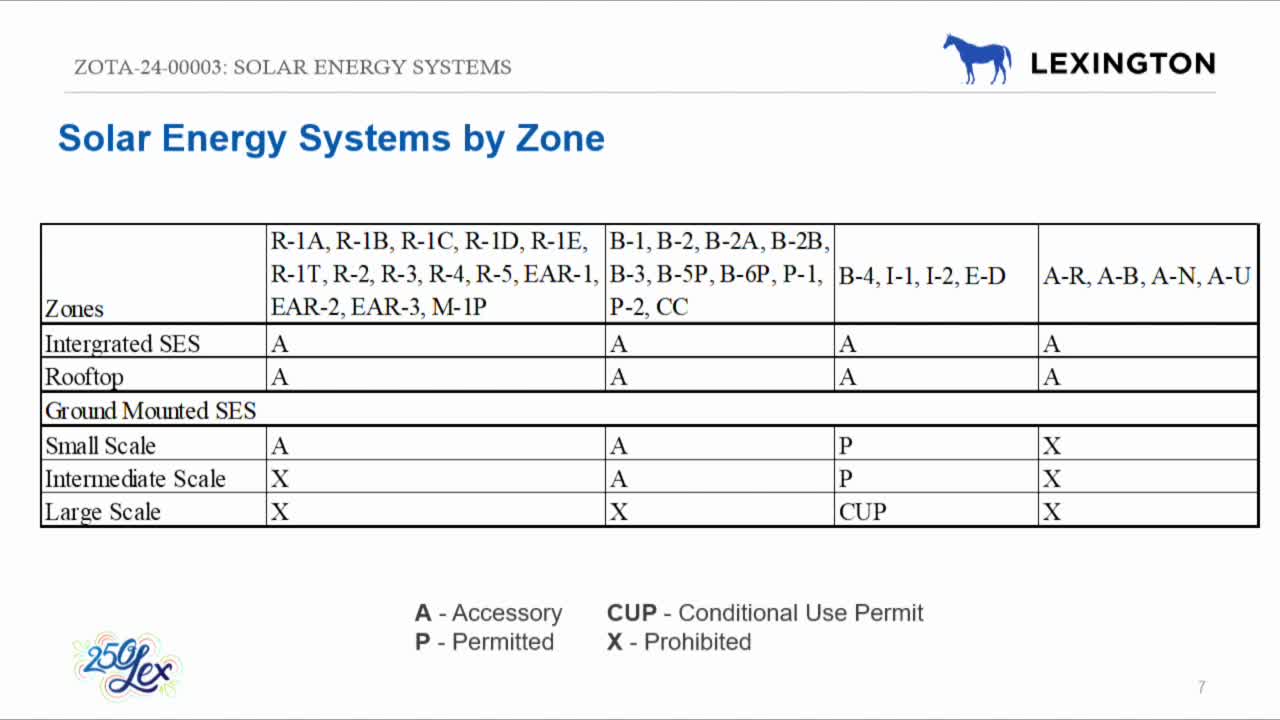Fayette County Council reviews solar regulations for agricultural and rural areas
July 01, 2025 | Lexington City, Fayette County, Kentucky
This article was created by AI summarizing key points discussed. AI makes mistakes, so for full details and context, please refer to the video of the full meeting. Please report any errors so we can fix them. Report an error »

In a recent meeting of the Lexington General Government and Planning Committee, significant discussions centered around the regulation of ground-mounted solar installations, particularly in agricultural and rural areas. As the demand for solar energy continues to rise, the committee emphasized the need for a comprehensive review process to address the potential impacts of large-scale solar projects on land use.
The committee highlighted that while smaller solar installations may fit comfortably within residential or business zones, larger projects—potentially spanning up to 5 acres or more—require a more thorough evaluation. This is especially true in agricultural zones, where the implications for land use can be profound. The Planning Commission recommended a more involved process to ensure public input and to assess the long-term effects of solar installations, which typically have a lifespan of 30 to 40 years.
A key point of discussion was the lack of existing guidelines on what happens to solar facilities once they are decommissioned, particularly in agricultural contexts. This gap in knowledge underscores the need for clear standards and regulations to manage future installations effectively.
During the meeting, the committee reviewed proposed changes to the zoning ordinance, including adjustments to the definitions of solar installation sizes. The threshold for intermediate-scale ground-mounted solar was raised from 5 to 10 acres, aligning with recommendations from the Kentucky Resource Council. Additionally, the committee sought to define "prime farmland" to protect valuable agricultural land from being converted to solar use without careful consideration.
Equity and local governance emerged as critical themes in the discussions. The committee noted that rural areas represent a significant portion of Fayette County's land mass and that local ordinances are essential for guiding solar development. Without these regulations, the committee expressed concern that utility companies could dictate land use without regard for community interests.
The committee also addressed public input in the decision-making process, emphasizing the importance of considering community feedback, especially for large-scale projects. Changes were proposed to include agricultural ground-mounted solar as accessory use in small and medium zones, while larger installations would require conditional use permits.
As the committee moves forward, the discussions from this meeting will shape the future of solar energy development in Lexington, balancing the need for renewable energy with the preservation of agricultural land and community interests. The next steps will involve further refinement of the proposed zoning changes and continued engagement with the public to ensure that all voices are heard in this critical conversation.
The committee highlighted that while smaller solar installations may fit comfortably within residential or business zones, larger projects—potentially spanning up to 5 acres or more—require a more thorough evaluation. This is especially true in agricultural zones, where the implications for land use can be profound. The Planning Commission recommended a more involved process to ensure public input and to assess the long-term effects of solar installations, which typically have a lifespan of 30 to 40 years.
A key point of discussion was the lack of existing guidelines on what happens to solar facilities once they are decommissioned, particularly in agricultural contexts. This gap in knowledge underscores the need for clear standards and regulations to manage future installations effectively.
During the meeting, the committee reviewed proposed changes to the zoning ordinance, including adjustments to the definitions of solar installation sizes. The threshold for intermediate-scale ground-mounted solar was raised from 5 to 10 acres, aligning with recommendations from the Kentucky Resource Council. Additionally, the committee sought to define "prime farmland" to protect valuable agricultural land from being converted to solar use without careful consideration.
Equity and local governance emerged as critical themes in the discussions. The committee noted that rural areas represent a significant portion of Fayette County's land mass and that local ordinances are essential for guiding solar development. Without these regulations, the committee expressed concern that utility companies could dictate land use without regard for community interests.
The committee also addressed public input in the decision-making process, emphasizing the importance of considering community feedback, especially for large-scale projects. Changes were proposed to include agricultural ground-mounted solar as accessory use in small and medium zones, while larger installations would require conditional use permits.
As the committee moves forward, the discussions from this meeting will shape the future of solar energy development in Lexington, balancing the need for renewable energy with the preservation of agricultural land and community interests. The next steps will involve further refinement of the proposed zoning changes and continued engagement with the public to ensure that all voices are heard in this critical conversation.
View full meeting
This article is based on a recent meeting—watch the full video and explore the complete transcript for deeper insights into the discussion.
View full meeting
